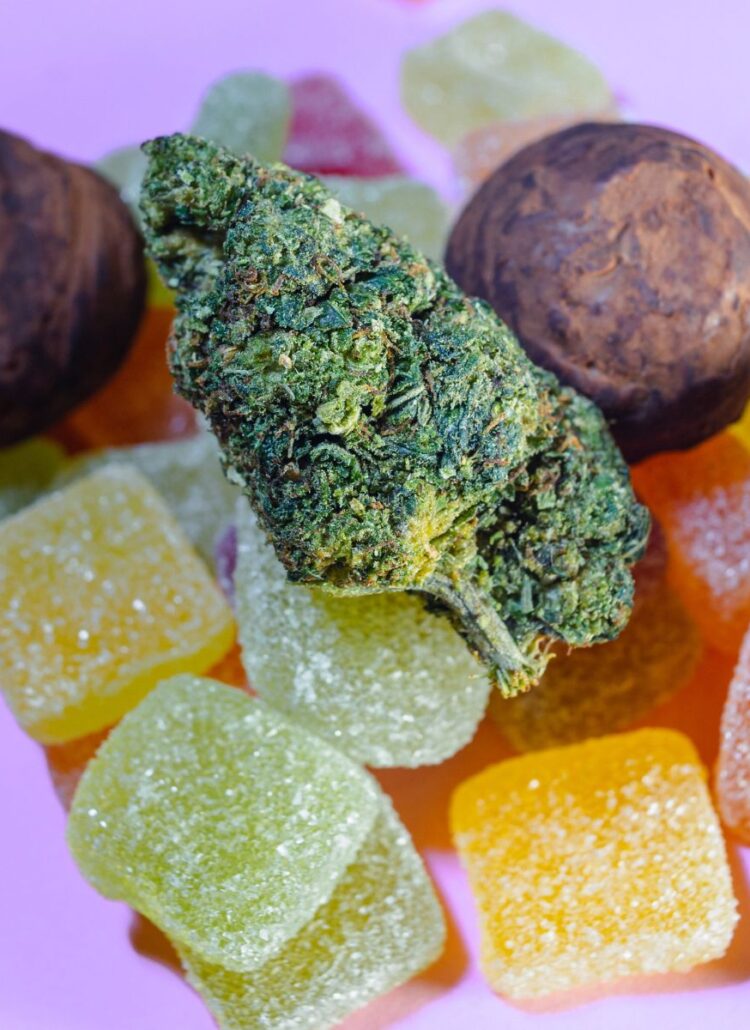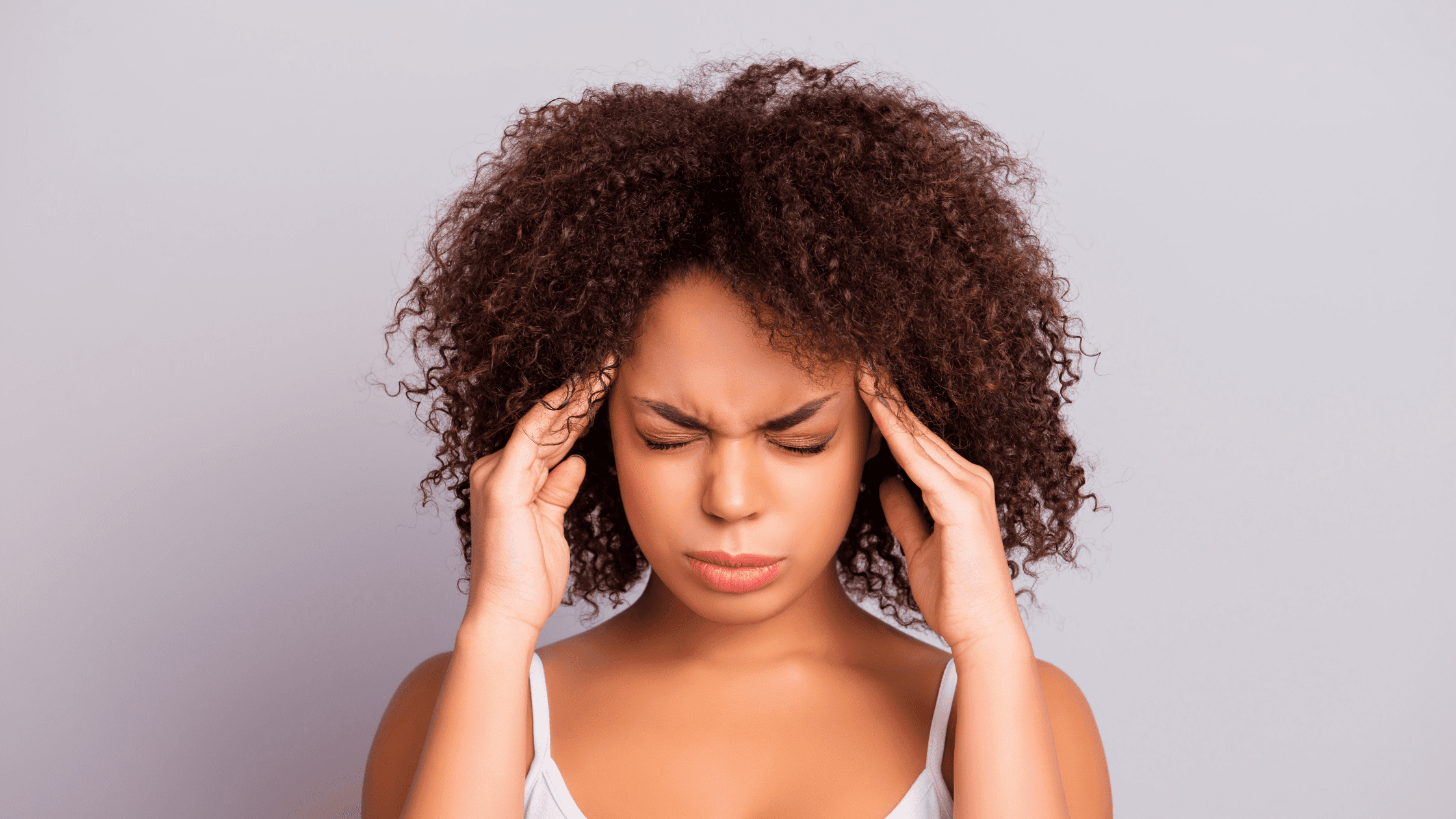
A common question I get asked by patients is if cannabis helps relieve migraine headache symptoms.
Migraine headache is characterized by a throbbing headache that typically affects one side of the head and is often accompanied by nausea and disturbed vision. Migraines can last hours or days and can range from minor to so disabling a patient needs to go to the hospital to terminate it.
Migraines can begin anytime in life and can be triggered by stress, alcohol, food and food additives, loud noises, bright lights, sleep changes and hormonal changes like menstruation, pregnancy, or menopause.
Migraine Headaches Are Common
36 million Americans, approximately 12% of the country, suffer from migraine. Migraine is a medical condition with enormous personal and socioeconomic costs, impacting one in four American households.1 Specifically, these costs reached $17 billion in the United States in 2005 and resulted in work loss for almost all sufferers.2-3
Sadly, in 2012 the National Institute of Health (NIH) funded only $8 million for migraine-related research. This is a fraction of 1% of the total NIH research budget, despite over 30% of women suffering from migraine.
Migraine Headache Stages
Migraines have four stages: prodrome, aura, headache and post-drome. Not all patients experience all stages. Some patients are aware of when a migraine is about to happen, a phenomenon called aura. Auras happen before or with headache, and can include tingling on one side of face, arm or leg, blind spots or flashes of lights.
Migraine Headache Symptoms
Symptoms of migraine headache include:
Prodrome
Prodrome is the first stage, and occurs one to two days before the actual migraine. Symptoms include:
- increased yawning
- increased thirst and urination
- neck stiffness
- food cravings
- rapid mood changes
- constipation
Aura
Aura is the second stage, and happens soon before or during the migraine episode. Symptoms include:
- seeing flashes of light, shapes or bright spots
- vision loss
- difficulty speaking
- hearing music or noises
- uncontrollable twitching
- pins and needles feeling in arms or legs
- weakness or numbness in face or one side of the body
Headache
Headache is the third stage, and is when the actually migraine occurs. Symptoms include:
- throbbing or pulsing pain on one or both sides of head
- nausea and vomiting
- blurred vision
- lightheadedness or fainting
- sensitivity to light, sounds, smell or touch
Post-drome
Post-drome is the fourth stage, and occurs 24 hours after the migraine. Symptoms include:
- sensitivity to light and sound
- fatigue
- euphoria
- moodiness
- dizziness
- confusion
Take Dr. Ross’s online course on Cannabis For Migraine:
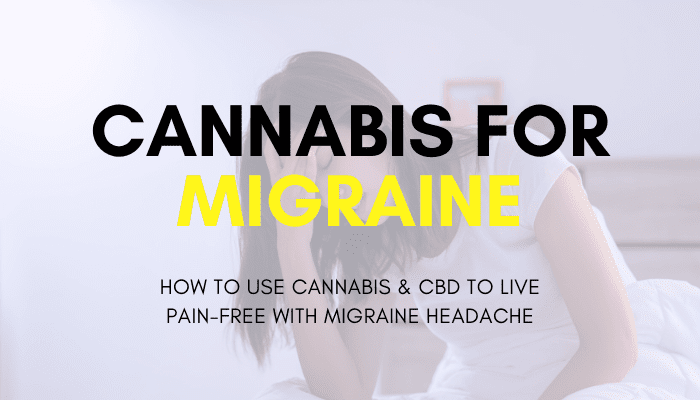
Common Migraine Headache Treatments
Common treatments of migraine headache include triptans, which increase serotonin. Triptans include: Axert (almotriptan), Relpax (eletriptan), Frova (frovatriptan), Amerge (naratriptan), Maxalt (rizatriptan), Imitrex or Alsuma (sumatriptan), and Zomig (zolmitriptan). Midrin (acetaminophen isometheptene-dichloralphenazone), Cafergot (erogtamine tartrate), Migranal Nasal Spray (dihydroergotamine) are also used to treat migraines.
OTC medications used include Excedrin Migraine (aspirin, acetaminophen and caffeine), Motrin Migraine and Advil Migraine (ibuprofen).
Nausea and vomiting associated with migraine are treated with drugs prescribed in addition to the treatments above: Compro (prochlorperazine), Reglan (metoclopramide), Thorazine (chlorpromazine), Inapsine (droperidol).
Drugs to prevent migraine include Botox, anti-seizure medications including Neurontin (gabapentin), Topamax (topiramate), Depakote (valproic acid), antidepressants including amitriptyline and Aventyl (nortriptyline), and drug used to treat high blood pressure including calcium channel blocker verapamil and beta-blockers propranolol, metropolol, and timodol.
Alternative therapies are also used to treat migraine and include: transcranial magnetic stimulation (TMS), biofeedback, yoga, acupuncture, and meditation. Finally, a new FDA-approved device called Cefaly is a headband TENS unit worn once a day for 20 minutes to prevent migraine.
Many patients are resistant to all the treatments above, and still struggle with frequent and severe migraine pain. They often turn to cannabis as the treatment of last resort, but what if they knew cannabis could help with their migraine pain when they first sought treatment?
Role of the Endocannabinoid System in Migraine Headache
It has been proposed that migraine headache may be rooted in endocannabinoid deficiency, and that this concept explain why the condition is responsive to cannabis treatment.4 Patients with chronic migraines have reduced levels of fatty acid amide hydrolase (FAAH), the enzyme that breaks down the endocannabinoid anandamide (AEA), suggesting an adaptive behavior of the endocannabinoid system.5 Finally, migraine headache is often comorbid with conditions also linked to endocannabinoid deficiency, including irritable bowel syndrome, fibromyalgia, and psoriasis.4
Although identification and validation of biomarkers has facilitated diagnostic tests for many medical conditions, there is no diagnostic for migraine.6 No study has measured plasma levels of endocannabinoid anandamide in patients with migraine headache.
Determining levels of plasma endocannabinoids in healthy patients and demonstrating a endocannabinoid deficiency in patients with migraines would provide health insurance companies with a reason to coverage cannabinoid treatment for migraine headache.
Role of Serotonin in Migraine Headache
Serotonin plays a key role in migraine HA, as serotonin agonists selective for the 5-HT1B and 5-HT1D receptors, called triptans, are effective for migraine HA.7 Buspirone, a partial 5-HT1A agonist, is also effective for reducing headache frequency but not intensity and more often used to treat anxiety.8-9 5-HT1A hypersensitivity may explain increase incidence of migraine attacks during periods of anxiety as well as explain migraine subtypes.10-12
Evidence suggests THC, the psychoactive component of cannabis, but not CBD, regulates serotonin release from blood platelets, modulating migraine.13 It has not been reported whether novel cannabinoids in marijuana such as cannabichromene (CBC) or tetrahydrocannabivarin (THCV) regulate serotonin release from platelets. Cannabis strains with THC are also effective in reducing nausea, which is present in up to 50% of patients with episodic migraine.14
Preclinical Research Supports Boosting Endocannabinoid System
A number of preclinical studies suggest cannabinoids may be useful in the treatment of migraine. Both CB1 and CB2 receptors are involved in migraine. Mutations in the cannabinoid receptor 1 gene (CNR1) are associated with migraine in humans.15
Endocannabinoids acting at the CB1 receptor in the periaqueductal gray (PAG) regulate trigeminovascular pathways that contribute to the severe throbbing nature of pain in migraine.16 Rodents given anandamide had reduced pain in an animal model of migraine.17 Finally, activation of CB2 receptors reduces pain in an animal model of migraine.18
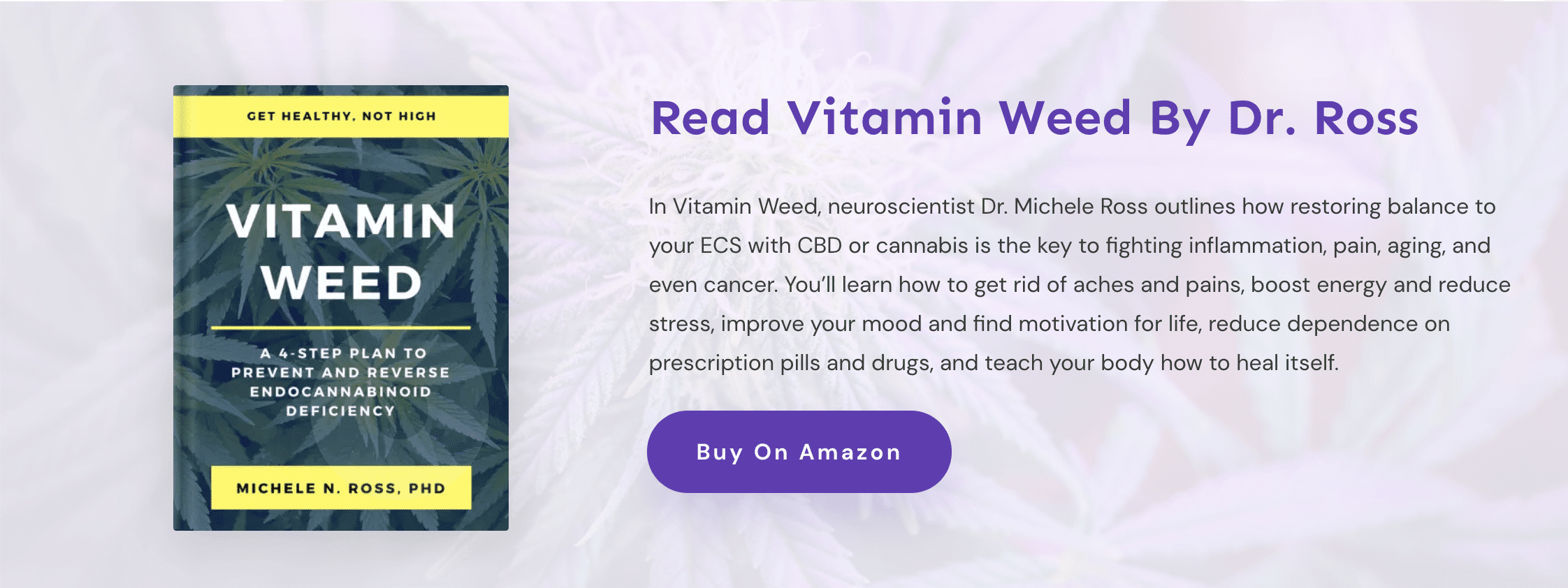
Clinical Research on Cannabis and Migraine Headache
Pilot data suggests cannabis or cannabinoids in cannabis are effective for migraine.367 A case study of five patients who used dronabinol, which is synthetic THC, with or without additional marijuana products, showed a reduction in migraine frequency.368
A survey of over 1400 medical marijuana patients in California found 18% were using medical marijuana to treat migraine.257 A recent study found Colorado patients using medical cannabis in edible or smokable form had a significant reduction in frequency of migraine.369
How To Use Cannabis For Migraine Headache
Cannabis can be used in many ways to prevent and treat headache. Vaping cannabis can provide almost instantaneous relief of headache for an hour or two without the health risks of smoking. However, it does not provide all-day relief, nor is this method good for preventing headaches.
In order to prevent headaches, steady-state levels of cannabinoids need to be achieved through CBD and/or THC transdermal patches, tinctures or pills containing a 1:1 to ratio of CBD to THC, or frequent application of transdermal pens to the wrist.
Cannabis Topical Application to the Back of Neck
THC or CBD applied topically to the back of neck (BON) can be absorbed through the skin and into unmylineated neurons that are close to the surface, where they reduce pain and other migraine symptoms. This topical regional neuro-affective (TRNA) approach was created by Dr. Ronald Aung-Din, the creator of Migraderm, which an oral migraine medication turned into a topical cream at a compounding pharmacy applied BON. CBD is now applied to the BON via his new product Cannidex, but any cannabis or CBD topical should be somewhat effect for reducing muscle tension locally as well as transdermally impacting nerves that signal pain.
THCV is a Rare Cannabinoid That Can Help Migraines
Anecdotal evidence suggests patient using cannabis strains such as “Durban Poison” or “Durban Haze” containing the rare cannabinoid THCV experience reduced migraine. THCV appears to be well-tolerated and not psychoactive at a 10 mg oral dose in humans.370-372
The mechanism of how THCV works is still unclear. THCV is suggested to be a neutral antagonist at the CB1 receptor, which means it binds to the receptor but does not activate it.373 THCV can activate CB2 receptors in vitro and decrease signs of inflammation and pain in mice via CB1 and/or CB2 receptor activation.374
THCV can also enhance serotonin receptor 5-HT1A activation, may also impart antipsychotic effects.375 As migraine is often comorbid with mental illness, another explanation for relief from migraine seen by using cannabis enriched in THCV may be due to these antipsychotic effects. THCV also shows potential to reduce nausea, which is often a symptom of chronic migraine.376-377
Risks of Treating a Patient With Migraine Headache With Cannabis
CBD can inhibit liver p450 enzymes in the same fashion as grapefruit does, increasing or (in rare cases) decreasing the amount of drug that is absorbed. Taking CBD or cannabis containing CBD with Zoloft (sertraline) may cause an overdose or side effects such as nausea, mood swings, agitation, itchy skin and dizziness, particularly in patients such starting Zoloft. CBD may also interact with Prozac, BuSpar, Valium, and Halcion.
Consult An Experienced Cannabis Clinician For Migraines
Most doctors weren’t trained on the endocannabinoid system, and many don’t believe in medical marijuana. If you talk to your doctor, and they either dismiss the idea of you using cannabis or simple don’t know anything about it, it’s time to consult a cannabis clinician.
If you already have your MMJ card or don’t plan on getting one, feel free to book an appointment with me to review your medical history and come up with a custom cannabis treatment plan to help reduce your headaches naturally.
If you need a medical marijuana card to access THC products (aka you don’t live in a recreational marijuana state), I recommend an online service called Veriheal, available in most states.
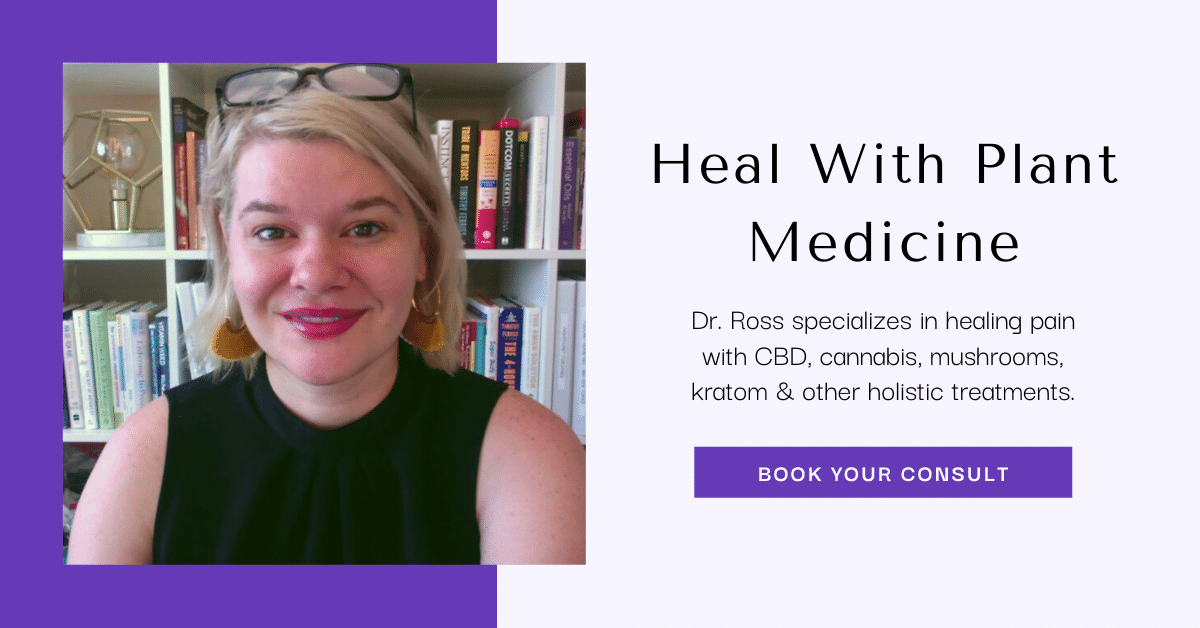
Pin This Post
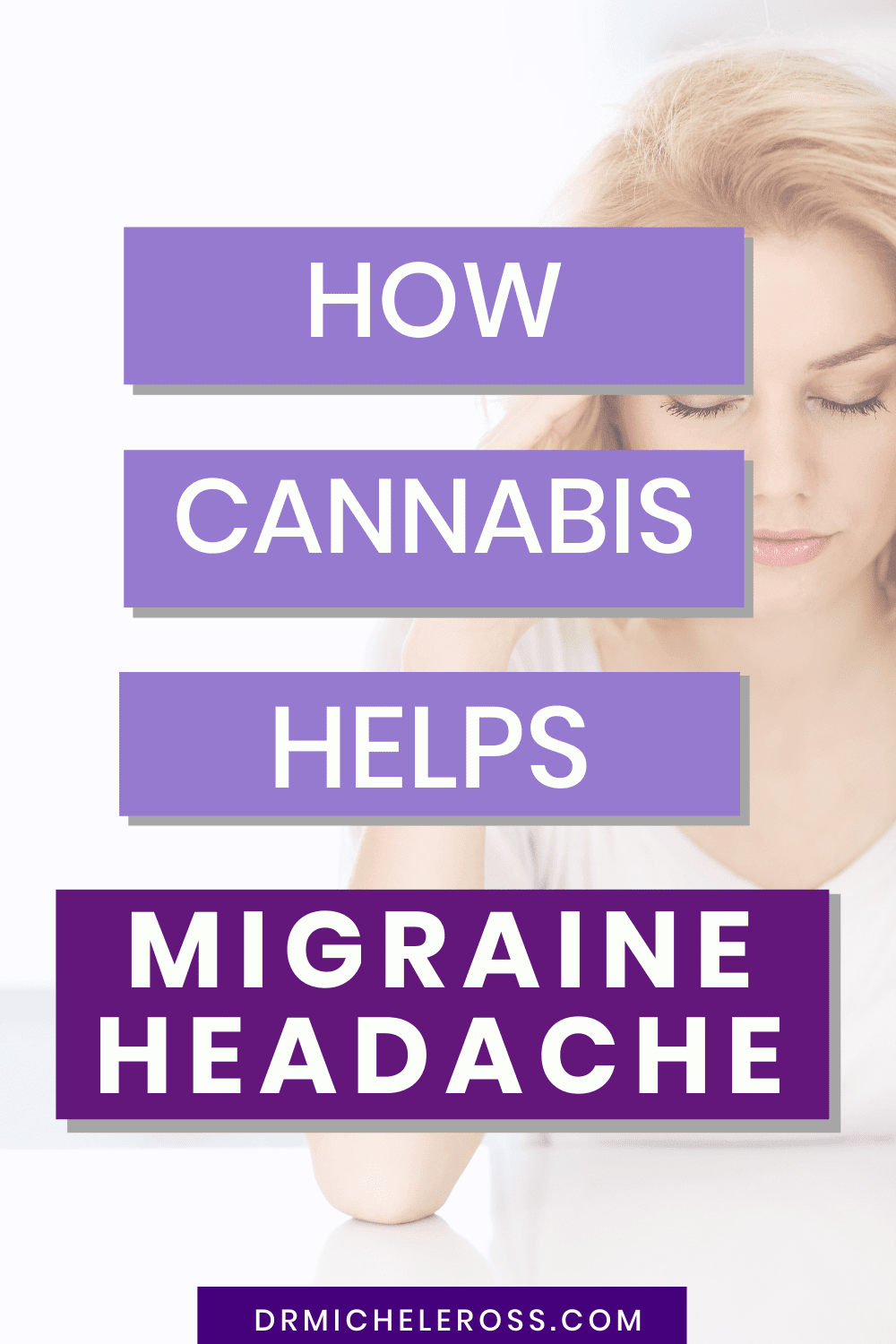
References
1. Lipton, R.B., et al., Prevalence and burden of migraine in the United States: data from the American Migraine Study II. Headache, 2001. 41(7): p. 646-57.
2. Hazard, E., et al., The burden of migraine in the United States: current and emerging perspectives on disease management and economic analysis. Value Health, 2009. 12(1): p. 55-64.
3. Goldberg, L.D., The cost of migraine and its treatment. Am J Manag Care, 2005. 11(2 Suppl): p. S62-7.
4. Russo, E.B., Clinical endocannabinoid deficiency (CECD): can this concept explain therapeutic benefits of cannabis in migraine, fibromyalgia, irritable bowel syndrome and other treatment-resistant conditions? Neuro Endocrinol Lett, 2008. 29(2): p. 192-200.
5. Cupini, L.M., et al., Degradation of endocannabinoids in chronic migraine and medication overuse headache. Neurobiol Dis, 2008. 30(2): p. 186-9.
6. Durham, P. and S. Papapetropoulos, Biomarkers associated with migraine and their potential role in migraine management. Headache, 2013. 53(8): p. 1262-77.
7. Hamel, E., Serotonin and migraine: biology and clinical implications. Cephalalgia, 2007. 27(11): p. 1293-300.
8. Lee, S.T., J.H. Park, and M. Kim, Efficacy of the 5-HT1A agonist, buspirone hydrochloride, in migraineurs with anxiety: a randomized, prospective, parallel group, double-blind, placebo-controlled study. Headache, 2005. 45(8): p. 1004-11.
9. Pascual, J. and J. Berciano, An open trial of buspirone in migraine prophylaxis. Preliminary report. Clin Neuropharmacol, 1991. 14(3): p. 245-50.
10. Leone, M., et al., 5-HT1A receptor hypersensitivity in migraine is suggested by the m-chlorophenylpiperazine test. Neuroreport, 1998. 9(11): p. 2605-8.
11. Cassidy, E.M., et al., Central 5-HT receptor hypersensitivity in migraine without aura. Cephalalgia, 2003. 23(1): p. 29-34.
12. Cassidy, E.M., et al., Differing central amine receptor sensitivity in different migraine subtypes? A neuroendocrine study using buspirone. Pain, 2003. 101(3): p. 283-90.
13. Volfe, Z., A. Dvilansky, and I. Nathan, Cannabinoids block release of serotonin from platelets induced by plasma from migraine patients. Int J Clin Pharmacol Res, 1985. 5(4): p. 243-6.
14. Buse, D.C., et al., Chronic migraine prevalence, disability, and sociodemographic factors: results from the American Migraine Prevalence and Prevention Study. Headache, 2012. 52(10): p. 1456-70.
15. Juhasz, G., et al., Variations in the cannabinoid receptor 1 gene predispose to migraine. Neurosci Lett, 2009. 461(2): p. 116-20.
16. Akerman, S., et al., Endocannabinoids in the brainstem modulate dural trigeminovascular nociceptive traffic via CB1 and “triptan” receptors: implications in migraine. J Neurosci, 2013. 33(37): p. 14869-77.
17. Greco, R., et al., Effects of anandamide in migraine: data from an animal model. J Headache Pain, 2011. 12(2): p. 177-83.
18. Greco, R., et al., Activation of CB2 receptors as a potential therapeutic target for migraine: evaluation in an animal model. J Headache Pain, 2014. 15: p. 14.
367. Lochte, B.C., et al., The Use of Cannabis for Headache Disorders. Cannabis Cannabinoid Res, 2017. 2(1): p. 61-71.
368. Mikuriya, T.H. Chronic migraine headache: five cases successfully treated with Marinol and/or illicit cannabis. Available from: http://druglibrary.org/schaffer/hemp/migrn1.htm.
369. Rhyne, D.N., et al., Effects of Medical Marijuana on Migraine Headache Frequency in an Adult Population. Pharmacotherapy, 2016. 36(5): p. 505-10.
370. Tudge, L., et al., Neural effects of cannabinoid CB1 neutral antagonist tetrahydrocannabivarin on food reward and aversion in healthy volunteers. Int J Neuropsychopharmacol, 2014. 18(6).
371. Rzepa, E., L. Tudge, and C. McCabe, The CB1 Neutral Antagonist Tetrahydrocannabivarin Reduces Default Mode Network and Increases Executive Control Network Resting State Functional Connectivity in Healthy Volunteers. Int J Neuropsychopharmacol, 2015. 19(2).
372. Englund, A., et al., The effect of five day dosing with THCV on THC-induced cognitive, psychological and physiological effects in healthy male human volunteers: A placebo-controlled, double-blind, crossover pilot trial. J Psychopharmacol, 2016. 30(2): p. 140-51.
373. Wargent, E.T., et al., The cannabinoid Delta(9)-tetrahydrocannabivarin (THCV) ameliorates insulin sensitivity in two mouse models of obesity. Nutr Diabetes, 2013. 3: p. e68.
374. Bolognini, D., et al., The plant cannabinoid Delta9-tetrahydrocannabivarin can decrease signs of inflammation and inflammatory pain in mice. Br J Pharmacol, 2010. 160(3): p. 677-87.
375. Cascio, M.G., et al., The phytocannabinoid, Delta(9)-tetrahydrocannabivarin, can act through 5-HT(1)A receptors to produce antipsychotic effects. Br J Pharmacol, 2015. 172(5): p. 1305-18.
376. Antonaci, F., et al., Migraine and psychiatric comorbidity: a review of clinical findings. J Headache Pain, 2011. 12(2): p. 115-25.
377. Rock, E.M., et al., Evaluation of the potential of the phytocannabinoids, cannabidivarin (CBDV) and Delta(9) -tetrahydrocannabivarin (THCV), to produce CB1 receptor inverse agonism symptoms of nausea in rats. Br J Pharmacol, 2013. 170(3): p. 671-8.
378. Ross, M.N. Vitamin Weed. Greenstone Books, 2016.
Share This Post



